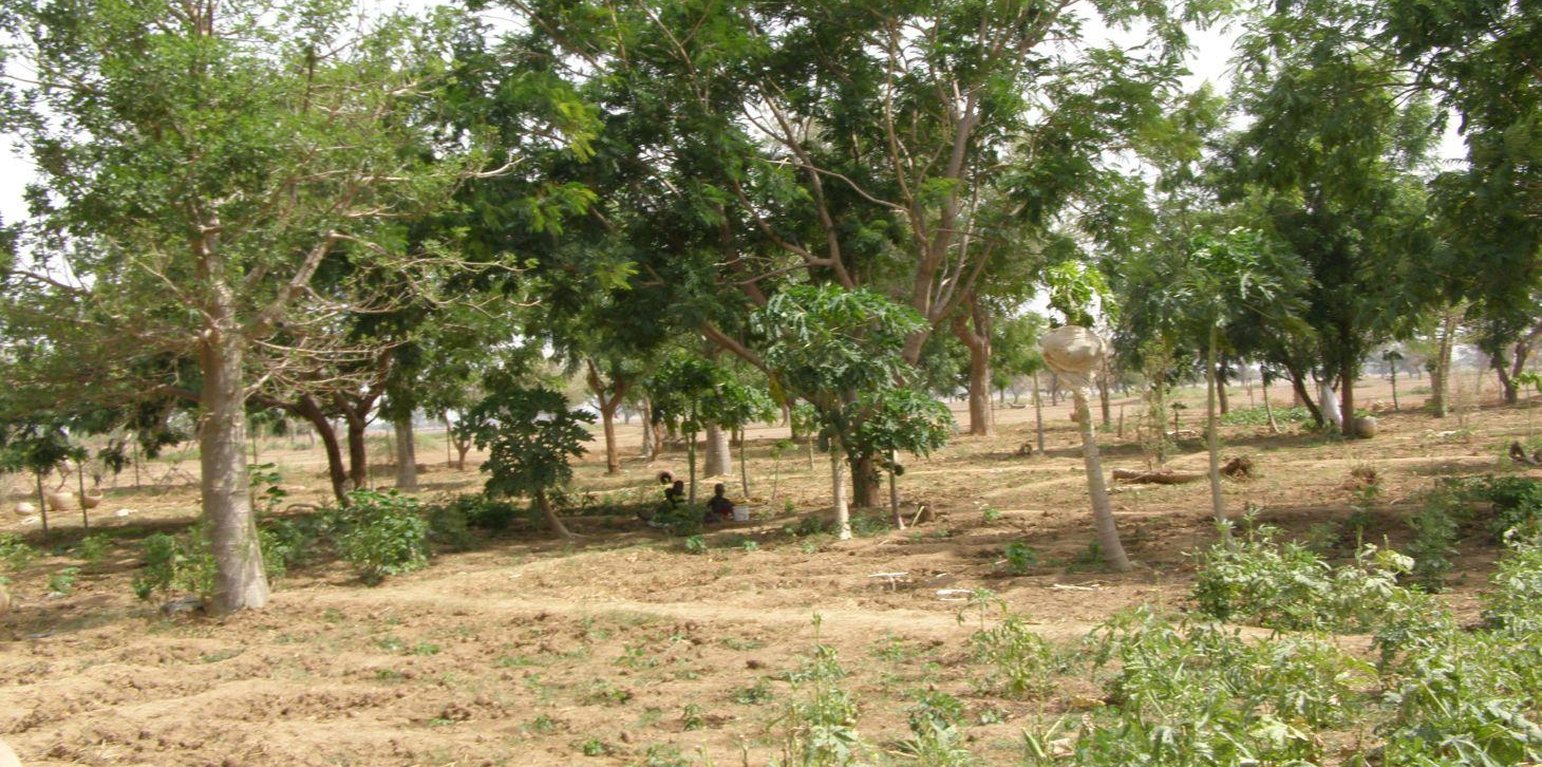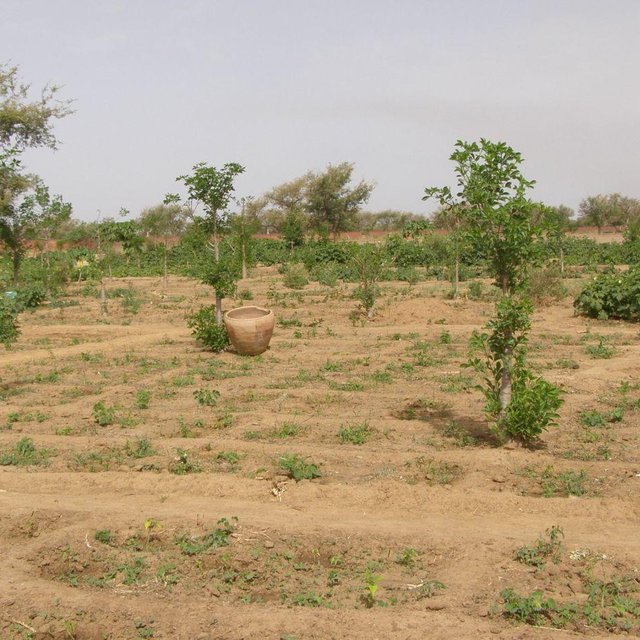



An irrigation scheme for market gardening is installed on barren lands and agroforestry tree species are planted. The aim is to restore degraded lands by planting endemic trees like the baobab and néré, whose leaves and fruit are very commonly used for food and medicinal purposes.
The main objective of this activity is to improve women’s production of trees and vegetables, while ensuring infertile lands are restored. Market gardening also contributes to (i) raising farmers’ incomes through the production of peppers, okra and shallots, (ii) developing the shallot sector, and (iii) building farmers’ capacities.
The plot measures 100 by 100 metres. The planted and living species are: 60 baobab saplings (Adansonia digita), 120 papaya saplings (Carica papaya), 43 néré saplings (Parkia biglobosa), 26 lemon tree saplings (Citrus lemon), 2 tamarind tree saplings (Tamarindus indica), 21 grafted jujube saplings (Zizyphus sp). The vegetable beds are created in between the lines of trees. The vegetable growing site measures 105 by 100 metres (an area of 10,544 square metres). It is provided with farm equipment and machinery, including wells, distribution basins and wire fencing around the entire perimeter. It also contains: 9 Acacia albida saplings, 156 baobab saplings and 78 papaya saplings.
The vegetable growing season runs all year round and is divided into three crop productions. During the cold season from October to March, shallots are planted; in the hot season from March to June, okra is grown; and in the rainy season peppers are grown. Women work 100% of the site. There is a 90% adoption of the growing calendar. Okra and peppers benefit from fertiliser inputs and the techniques used for growing shallots.
Critical issues requiring attention are women’s poor access to the developed land and the scarcity of equipment, particularly for processing okra and shallots.
Located in the urban commune of Djenné, the ‘Benkadi’ cooperative was a beneficiary of SADeF funding in 2009/2010 (for its micro-project to develop a one-hectare market garden scheme). This cooperative was the product of the transformation of Syn women’s collective, which undertakes individual and collective activities, and focuses on the sustainable management of natural
resources. It was set up on 22 May 1998 and its headquarters are located in Syn. More than 130 women aged between 18 and 50 make up the cooperative, and nearly 30 cooperative members work the site. The main collective activities undertaken by the Syn-based ‘Benkadi’ cooperative company are: farming a biodiverse market garden plantation; operating a market garden; implementing a tontine (investment plan); fattening up livestock; growing ground nuts and tree growing; handicrafts. Concerns exist regarding enlarging and enhancing the site’s dewatering system to improve women’s accessibility to the developed land. Members are willing to provide at least 30 women to work the site each day.
SADeF’s installation of the market garden has enabled more than 100 women to take part in income-generating activities. The women have produced and traded: 20,069 kilograms of shallots per year; 150 x 100-kilogram sacks of peppers per year; 429 sacks of dry baobab leaves; 6,090 papaya fruits; 15,700 kilograms of okra. The output from the 2011 growing season made a profit of 12,242,620 CFA francs (23'690 Dollar).
Location: Mali, Mali
No. of Technology sites analysed:
Spread of the Technology:
In a permanently protected area?:
Date of implementation: less than 10 years ago (recently)
Type of introduction






| Specify input | Unit | Quantity | Costs per Unit (CFA Franc) | Total costs per input (CFA Franc) | % of costs borne by land users |
| Other | |||||
| Total construction | 1.0 | 35258.0 | 35258.0 | 100.0 | |
| Total costs for establishment of the Technology | 35'258.0 | ||||
| Total costs for establishment of the Technology in USD | 68.2 | ||||
SADeF’s installation of the market garden has enabled more than 100 women to take part in income-generating activities. Infertile lands are restored and farmers’ incomes are raised through the production of peppers, okra and shallots.